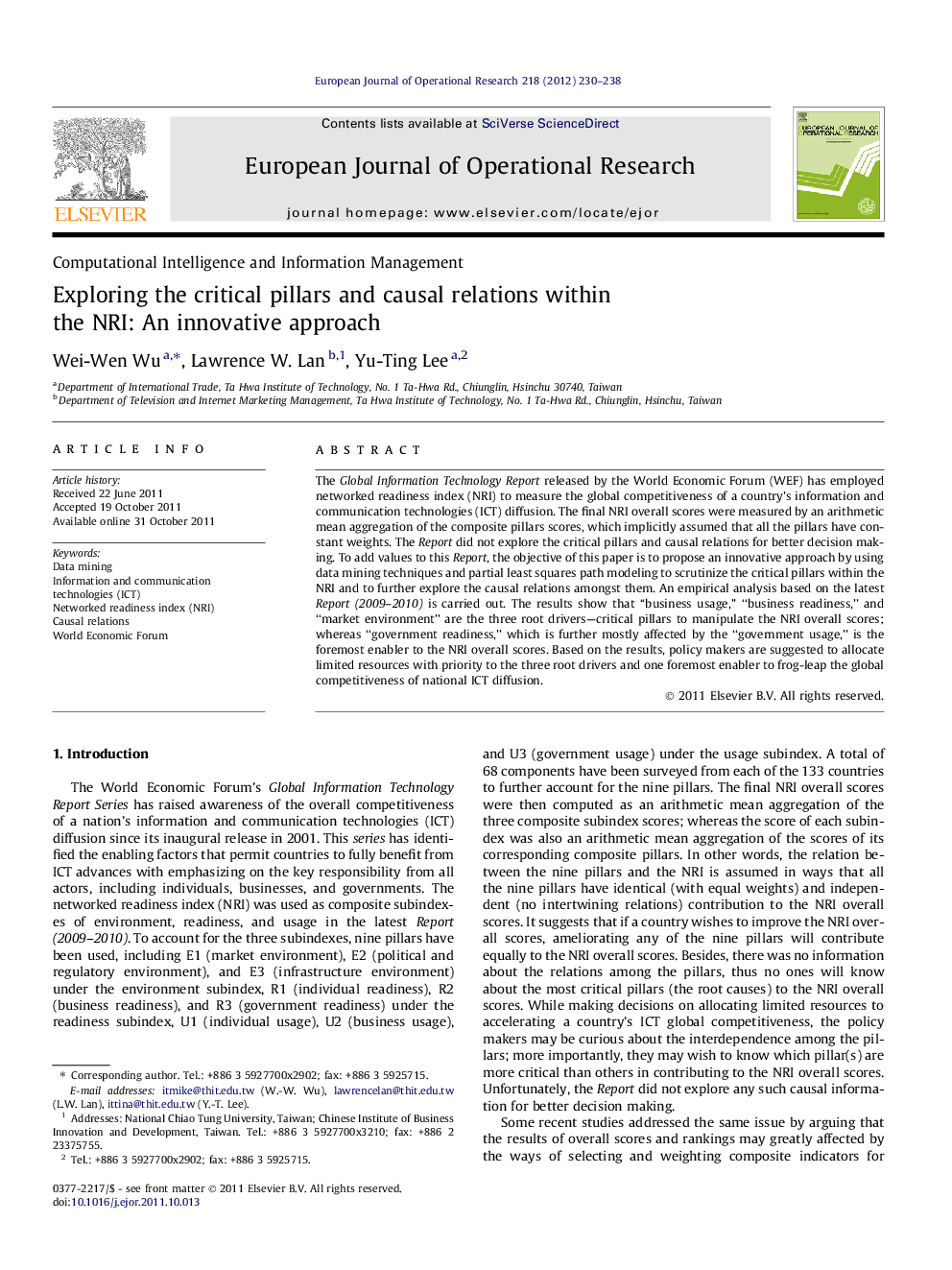| Article ID | Journal | Published Year | Pages | File Type |
|---|---|---|---|---|
| 476907 | European Journal of Operational Research | 2012 | 9 Pages |
The Global Information Technology Report released by the World Economic Forum (WEF) has employed networked readiness index (NRI) to measure the global competitiveness of a country’s information and communication technologies (ICT) diffusion. The final NRI overall scores were measured by an arithmetic mean aggregation of the composite pillars scores, which implicitly assumed that all the pillars have constant weights. The Report did not explore the critical pillars and causal relations for better decision making. To add values to this Report, the objective of this paper is to propose an innovative approach by using data mining techniques and partial least squares path modeling to scrutinize the critical pillars within the NRI and to further explore the causal relations amongst them. An empirical analysis based on the latest Report (2009–2010) is carried out. The results show that “business usage,” “business readiness,” and “market environment” are the three root drivers—critical pillars to manipulate the NRI overall scores; whereas “government readiness,” which is further mostly affected by the “government usage,” is the foremost enabler to the NRI overall scores. Based on the results, policy makers are suggested to allocate limited resources with priority to the three root drivers and one foremost enabler to frog-leap the global competitiveness of national ICT diffusion.
► Networked readiness index (NRI) measures the global ICT competitiveness of a country. ► We explore the causal relations amongst the critical pillars within NRI. ► Business usage, business readiness and market environment are the three critical pillars. ► Government usage is the foremost enabler.
